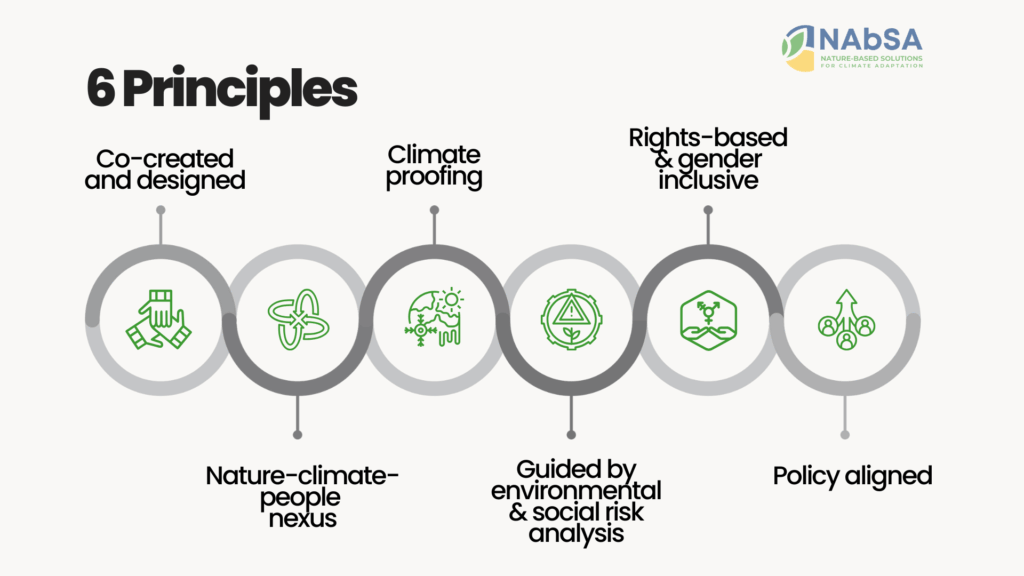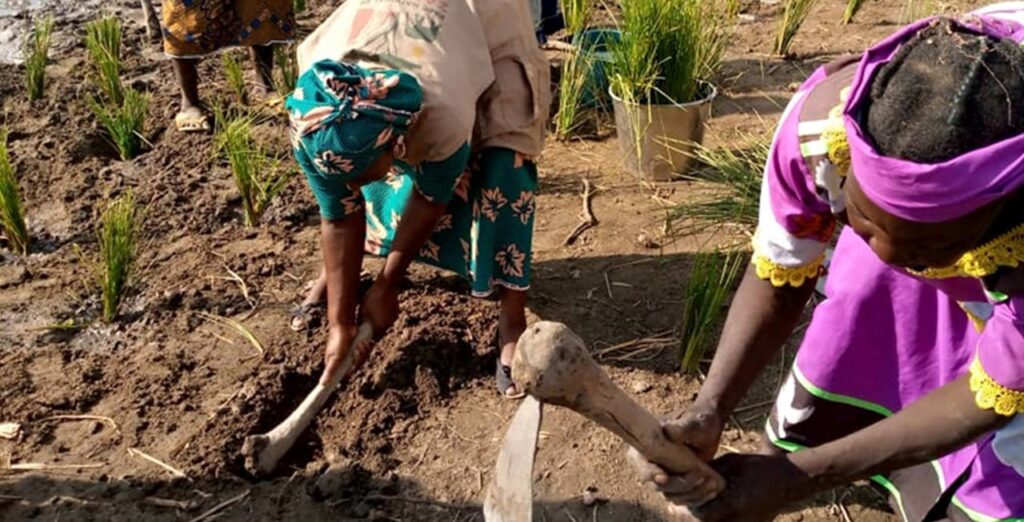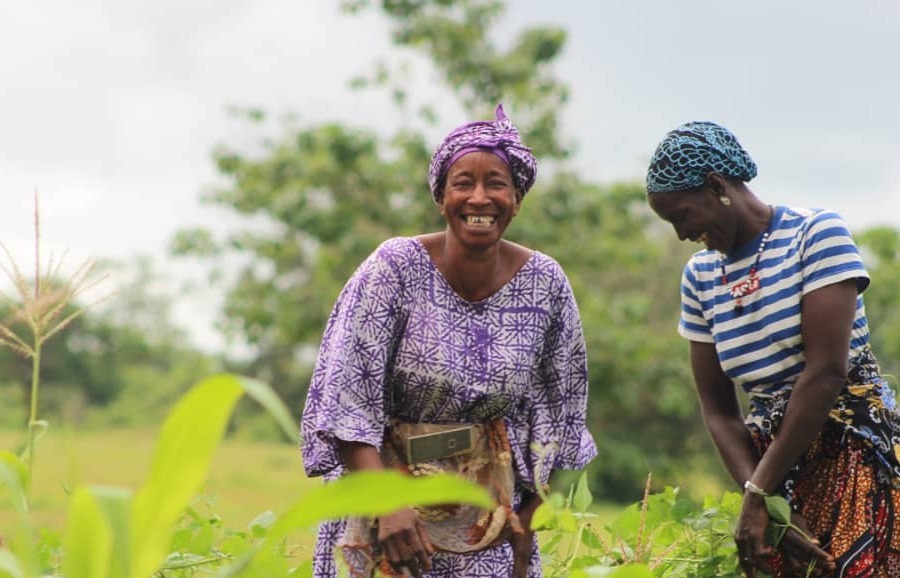
A Framework for Collective Climate Action
Climate adaptation is most effective when solutions are created with communities — not delivered to them. NAbSA is built on that notion. It is not a project toolkit. It is a people‑led pathway that aims to put at the forefront of climate action the relationship between people, nature and climate.
This spirit of collaboration was at the core of a dynamic session on the NAbSA Operational Framework at the IUCN World Conservation Congress 2025. NAbSA, coordinated by IUCN and funded by Global Affairs Canada through its Partnering for Climate (P4C) initiative, brings together 19 projects across 30 countries in sub-Saharan Africa, working in 12 diverse ecosystems. Its aim: to provide practical, participatory guidance for designing nature-climate actions for adaptation and resilience rooted in community ownership and connecting them to policy and finance spheres.
Co‑developed with partners on the ground, the Framework offers clear principles and steps to design adaptation and resilience actions that are community‑driven, gender‑responsive and grounded in lived knowledge; not imposed from the outside. This session was the opportunity to learn more about the six guiding principles and steps of the NAbSA Operational Framework.

Why NAbSA, Why P4C
Canada has committed $5.3 billion in climate finance — 40 percent for adaptation and $1 billion for nature‑based solutions — guided by a feminist and rights‑based approach. As Kerry Max of Global Affairs Canada noted: “In the absence of women’s full participation in designing and implementing climate solutions, these programs simply will not be as effective or sustainable,” Kerry noted.
NAbSA was built in that spirit — centering women, Indigenous peoples and frontline communities as decision‑makers, knowledge holders and co‑owners of transformation.

From Policy to Practice: Co-Creation in Action
- Restoring Mangroves and Rights in Senegal — Frédérique Thomas, SOCODEVI
In Senegal, mangrove ecosystems are at the heart of community life — and of Natur’ELLES, a women-led initiative.
Frédérique Thomas highlighted how the project tackles deforestation drivers through three interconnected pillars: ecosystem conservation, inclusive resource governance, and economic diversification. Women-led oyster farming has become both a restoration tool and an empowerment mechanism.
“Women are at the center of the solution — from traditional knowledge to inclusive governance. When they have the space and resources, they transform their communities,” she said.
The project also removes practical barriers to participation: for example, providing childcare during governance meetings to enable women to take part in decision-making.

- Measuring Impact and Enabling Transformation — Gaétan Quesne, Baastel
In Chad and the Republic of Congo, adaptation projects such as ELLESadAPT face vastly different social and ecological contexts.
Gaétan Quesne described how gender-sensitive participatory vulnerability assessments inform locally relevant interventions. Monitoring covers economic returns for women’s groups, ecosystem resilience, and governance structures.
“What happens on the ground should not remain on the ground — it must inform global indicators and climate policy,” he stressed.

- Empowering Women in the Blue Economy — Andréanne Martel, Mission Inclusion
Through the Regenerative Seascapes (ReSea) Project, part of the Great Blue Wall Initiative, Andréanne described how inclusive NbS in coastal seascapes are designed from the ground up.
Every activity begins with consultation and co-creation: communities, especially women’s groups, identify promising value chains. These are then validated through joint meetings with local authorities and policymakers, ensuring strong alignment with national priorities.
Selected women-led groups receive intensive business training and mentoring — turning restoration activities such as mangrove replanting or seagrass farming into viable economic opportunities.
“Co-creation isn’t just a buzzword. It means recognizing every actor as a co-owner of the project,” Andréanne Martel emphasized.

- Forest Restoration Through Community Knowledge — Olivia Nasewicz, World University Service of Canada
In Guinea, Ghana, and Côte d’Ivoire, Olivia shared how women are central to restoring tropical forests in the Nature-based climate adaptation in the Guinean forests of West Africa project.
By integrating traditional ecological knowledge with eDNA analysis, communities identify priority species for reforestation. More than 100 rural women have been trained to collect biodiversity data, building both their confidence and influence in decision-making.
“When women lead restoration, they not only care for trees — they cultivate resilience,” Olivia Nasewicz said.
This collaboration is also filling gaps in global biodiversity databases, elevating West African ecosystems in international monitoring efforts.

- Women at the Heart of Adaptation in Morocco and Chad — Renée Brunelle, SOCODEVI
Renée Brunelle spoke about projects in Morocco’s Middle Atlas forests (FERMA) and Chad’s (TRACC) semi-arid landscapes, where women’s groups drive ecosystem conservation and livelihood diversification.

Through land documentation and traditional leader engagement, women gain more secure access to land, enabling sustainable agroforestry and value-added production of peanuts, sesame, and non-timber forest products.
“Gender inclusion is not a checkbox — it’s about shifting power structures and ensuring women can act, decide, and benefit,” Renée explained.

- Gender-Transformative Adaptation: More Than a Principle
Throughout the panel, moderator Verónica Ruiz Garcia (IUCN) underscored that gender work is a spectrum. Transformation happens when systemic barriers are addressed at every step: from recognizing unpaid care work to creating enabling governance structures.
Panelists repeatedly highlighted Principles 1 and 2 of the NAbSA Operational Framework — co-creation and equity — as essential enablers.
They also pointed to what makes a difference in practice: step-by-step guidance, practical tools, gender equality and social inclusion (GESI) training, funding pathways, and the will to do things differently.
“Integration means bringing everyone to the table — not just as participants, but as decision-makers,” Verónica concluded.
A Community-led Innovation Space for Adaptation and Resilience
The NAbSA Operational Framework is more than a theoretical model — it’s a community-led innovation space, a learning ecosystem rather than a fixed model. By uniting policy and practice, rights and restoration, NAbSA shows that equitable, locally-led climate adaptation is not aspirational, it is already happening.

Looking Ahead: From NAbSA to Global Action
The session made clear that truly integrative climate adaptation is possible and already happening. By putting co-creation and gender equity at the center of NbS design, NAbSA projects are advancing resilience for both people and ecosystems.
A warm thank you from all of us at NAbSA to all speakers and participants for contributing their expertise, passion, and vision to this session. Stay tuned for the release of the NAbSA Operational Framework at the United Nations Framework Convention on Climate Change, 30th Conference of the Parties (COP30), this November in Belém.
Thank you to all partners and practitioners shaping this work with courage and care; and to Global Affairs Canada for its continued support in advancing climate justice and resilience.
